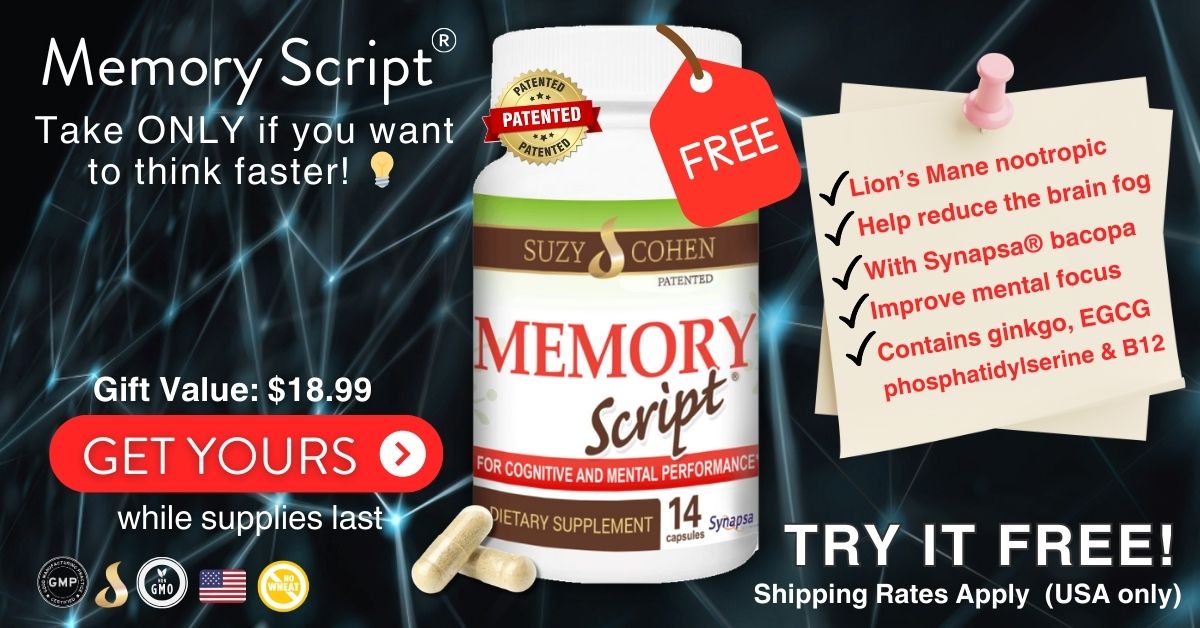What's On This Page?
ToggleAphasia is not well understood, and sometimes it’s confused with what toddlers have – apraxia. This article will clarify the differences.
Aphasia is a language disorder caused by damage to areas of the brain responsible for speech and language, typically in the left hemisphere. It occurs mostly in adults and oftentimes results from a stroke, traumatic brain injury (TBI), tumor, or progressive disorder such as dementia. There are three types of aphasia.
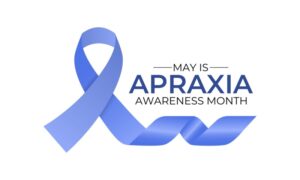
Broca’s aphasia occurs when a person knows what they want to say but struggles to form complete coherent sentences. Wernicke’s aphasia sounds more fluent, but the speech is often incoherent due to impaired comprehension. In more severe cases, global aphasia affects both speech production and understanding. Despite these challenges, intelligence is not affected, people with this particular speech disorder can think clearly. It’s the ability to express (or understand) language that’s disrupted.
Is it the same as what toddlers experience? Not quite. Many concerned parents notice their toddler is bright, understanding everything, but they can’t form clear or coherent speech.
They may try to say words but come out garbled. This issue is a motor speech disorder called childhood apraxia of speech (abbreviated as CAS).
Aphasia is a language disorder whereas CAS is a speech-motor coordination issue.
Before we go any further, I want to let you know that there are several types of apraxia. In this article, I’m focusing specifically on speech apraxia and how it compares to aphasia – otherwise, I’d be writing an entire book! Just so you have the bigger picture, here are a few other types of apraxia you might have heard about:
- Ideomotor apraxia – trouble imitating gestures (ie waving hello)
- Constructional apraxia – difficulty assembling or drawing (ie drawing a clock)
- Orofacial and speech apraxia – challenges with facial or verbal movements (ie blowing a kiss or saying “puppy”)
- Gait apraxia – poor coordination while walking (ie shuffling steps)
- Ideational apraxia – has trouble planning multi-step tasks (ie making a sandwich)
In some cases, apraxia isn’t isolated as just a motor issue, it could a clinical clue to something else that is underlying the symptom. This was elaborated on as it pertains to Alzheimer’s disease in a 2023 paper entitled, Apraxia and dementia severity in Alzheimer’s disease: a systematic review.
Because apraxia shows up in older people with Alzheimer’s, it may be used to track how far the disease has progressed. More importantly, assessing for apraxia (especially the different types if they’re involved) can help distinguish Alzheimer’s from other neurodegenerative diseases, like frontotemporal dementia. This is just one example of how apraxia shows up as part of something else that’s more clinically relevant. If you love someone with Alzheimer’s read my other article, Treating Alzheimer’s Disease: 3 Pharmaceuticals and 3 Natural Options.
The above picture came from the website The Aphasia Center.
In the case of CAS, the child’s brain knows exactly what it wants to say, but the mouth doesn’t follow the plan. The exact cause isn’t known, but it almost always occurs due to toxic environmental exposures or neurological stressors during development. It is a neurological disorder, and occasionally tied to some types of autism or cerebral palsy, but not always. Genetic factors or other neurodevelopmental disorders play a role.
SNPs Come Into Play
A lot of parents look to vaccine injury as a cause (due to the onset/timing of CAS), but there is nothing in the current literature to support a direct causal link. Let’s talk about something that does have a well-established connection. The FOXP2 gene has been proven and shown to have an actual connection to childhood apraxia of speech (CAS). This gene is usually described as the first “speech and language gene” ever identified so it’s the gene that helps us speak. But it does so much more than that. A problem in this gene will almost always impact other things along with speech… things such as language, motor skills, learning, social development, or cognitive function so it’s not isolated to just talking.

FOXP2 is a gene in our DNA that provides instructions for making this special protein involved in brain development, especially in areas tied to motor control, language, and learning. It’s active in brain regions like the basal ganglia and Broca’s area, which are important for coordinating the fine motor movements needed for speech. When there’s a mutation or disruption in the FOXP2 gene of a developing baby, the child knows what he/she wants to say but can’t coordinate their lips, tongue, or jaw to produce the words correctly. In simpler terms, a glitch in the FOXP2 can disrupt the brain’s ability to plan speech movements – the hallmark problem in CAS.
FOXP2 is just one gene, impacts of a SNP in this gene can cause more global problems as I mentioned up above.
Will Parents of a Child with CAS Always Have Children with CAS?
No, CAS can occur when there is just one mutated copy of the FOXP2 gene meaning the gene pattern can be heterozygous, not necessarily homozygous. Both parents do not need to have the mutation, so only one parent needs to carry the mutation and there is a 50% chance of passing it on to each child. Most importantly, not all FOXP2 mutations are inherited. Some occur spontaneously and the polymorphism isn’t even present in either parent. For parents building families, this makes it harder to predict future risk.
Genetic testing (like whole exome sequencing or specific FOXP2 panels) can identify if your child actually has a mutation in FOXP2 (or another speech-related gene – there are others other than FOXP2 so keep reading). Regardless, testing the parents of a child with CAS can determine if the mutation was inherited or spontaneous.
A child with CAS doesn’t need two bad copies of FOXP2 – just one mutated copy can cause it. So if your child has CAS tied to FOXP2, there is a risk of passing it on to siblings, especially if one parent carries the gene. But genetics isn’t the whole story, CAS can be influenced by many factors.
The gene CNTNAP2 is downstream of FOXP2 and it helps brain cells communicate with one another. A mutation here may cause anything from CAS to language impairment, epilepsy and even autism spectrum disorders. Then there GRIN2A gene which has to do with NMDA receptor function and a mutation here is associated with CAS, speech delays, and epilepsy-aphasia spectrum disorders (EAS). There are several others. The last genes I’ll touch on which may show up in your genetic testing is KIAA2022, CHD3, SETBP1. These are emerging in genetic studies of kids with speech delays, CAS (especially when CAS occurs with cognitive challenges) and other developmental delays. Talk to your doctor about the tests you can take and how to interpret them.
To clarify aphasia is almost always acquired, not genetic so none of these genes I’ve mentioned have anything to do with aphasia.
Key Differences: Aphasia vs. Apraxia
While aphasia and apraxia can both affect a person’s ability to speak, they come from very different problems in the brain.
Aphasia is a language disorder. It affects the brain’s ability to find words, understand language, read, and write. People with it might struggle to speak in full sentences, or they might say the wrong word without realizing it. Comprehension can also be affected, depending on the type they have.
Apraxia of speech, on the other hand, is a motor planning disorder. The person knows exactly what they want to say, but the brain has trouble sending the right signals to the muscles of the mouth. As a result, speech becomes effortful, inconsistent, and sometimes hard to understand—even though comprehension and intelligence are completely intact.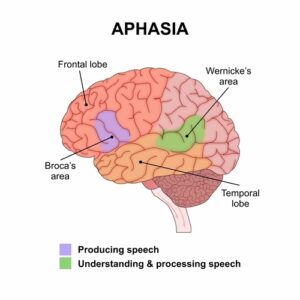
In simpler terms:
-
Aphasia is about language access and processing. It’s acquired.
-
Apraxia is about coordinating the movements needed to speak.
You can think of aphasia as more of a “word retrieval” issue, while apraxia is a problem with “planning the muscle movements” needed for speech. Although these two conditions can occur together – especially in adults after a stroke or TBI – they stem from different underlying challenges and require different therapeutic approaches.
In adults, particularly those recovering from a cerebrovascular accident (CVA), it’s easier to connect the dots and identify what exactly caused the speech impairment or new challenges. But when a child is born healthy and then struggles to speak by the age of 2 or 3, despite understanding everything, it leaves parents with questions and no clear-cut answers. I discussed genetic predispositions above in an earlier section. Many parents on forums ask if vaccine injury is tied to CAS and while it might be, there is no definitive causal link, just anecdotal reports of CAS developing following vaccination (possibly MMR) but again, no one knows and there is no proof.
The Goal
Whether dealing with aphasia in an adult or apraxia in a child, your goal is the same, that is to enhance neuroplasticity. This just means you help the brain’s ability to form new neural connections. It can be done, especially if done early. And naturally, speech therapy remains the foundation of care.
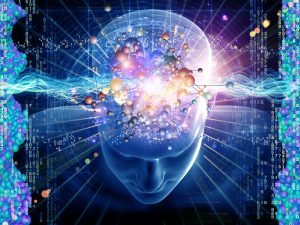
Studies Offer Hope
A new review just published in the American Journal of Speech-Language Pathology looked at all the research from the last 8 years to see what’s working when it comes to restoring speech.
Here’s what they found:
The most effective therapies use something called articulatory kinematic techniques. In simple terms, this means retraining the mouth and speech muscles through repetition, slowing down, and precise practice of sounds and syllables. It’s all about helping the brain re-learn how to move the mouth properly – to make it say more accurately what it’s trying to say.
Some newer therapies are using what’s called “intersystemic facilitation” which is basically borrowing other sensory inputs (like tapping, rhythm, or even gestures) to help the brain find its words. These are newer but gaining traction. Learn more about intersystemic facilitation aka intersystemic reorganization by CLICKING HERE.
Interestingly, a handful of these therapies now include technology-based options, including self-led practice sessions which is perfect for those folks who want to do more practicing at home between doctor’s appointments.
Another advancement? More therapies are now targeting apraxia and aphasia together, which makes more sense, since the two problems often overlap after brain injury, particularly in adults.
But back to the STUDY – of the 27 studies reviewed, most were early-phase, and only a few met high standards of clinical research. That said, the quality of the studies is getting better, and there’s growing support for larger clinical trials in the near future, especially for the speech retraining approaches.
Bottom line:
Speech therapy for apraxia is evolving, and the focus is shifting toward precision-based muscle retraining, rhythm-based support, and digital tools you can use from home. Progress is happening—even if we still have more to learn.
8 Holistic Remedies
In the meantime, I thought of some options that could help an adult/child with language and comprehension:
1. Ginkgo Biloba – Circulation for the Speech Centers
Ginkgo biloba improves blood flow to the brain, particularly in areas affected by vascular insufficiency or injury. In stroke survivors with aphasia, this may enhance the delivery of oxygen and nutrients to the recovering neural tissue. I’ve written more on ginkgo in combination with piracetam down below.
2. Bacopa Monnieri – Memory and Verbal Clarity
This Ayurvedic herb has been shown to improve verbal recall, working memory, and processing speed. It’s also helpful in managing stress, which can worsen word retrieval. Bacopa is a central ingredient in my Memory Script capsules, alongside Lion’s Mane and Ginkgo, formulated for gentle, long-term cognitive support.
3. Lion’s Mane – Stimulating Nerve Growth Factor
Lion’s Mane mushroom promotes production of nerve growth factor (NGF), which supports neuron repair and regeneration. For both children and adults, this can make a meaningful difference in language recovery if part of a consistent neuro-nutrient program.
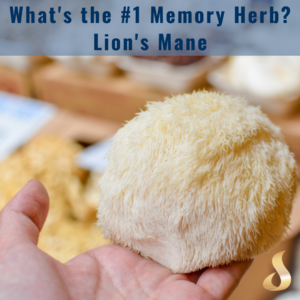
4. Curcumin – Taming Brain Inflammation
Curcumin, the active compound in turmeric, is a powerful anti-inflammatory that crosses the blood-brain barrier. Brain inflammation—whether from trauma, infection, or immune activation—can impair language function. Adding curcumin may help modulate this response, especially in recovering children with suspected neuroinflammatory involvement.
5. Omega-3s – Building Healthy Synapses
Docosahexaenoic acid (DHA), a key component of omega-3 fats, is critical for brain development and neural plasticity. It helps strengthen the fatty membranes around brain cells and improve cell signaling—essential for clear thinking and speech processing.
6. B Vitamins – Fueling Brain Chemistry
Bioactive vitamin B12 (methylcobalamin) and biologically active “folate” (think 5-MTHF NOT “folic acid”) are necessary for METHYLATION, neurotransmitter balance, and myelin synthesis. These are especially important for children with developmental delays or MTHFR genetic polymorphisms. I often recommend a formula like my Mito B Complex, which contains these nutrients in ready-to-use forms.
7. Magnesium L-Threonate – Supporting Synaptic Density
This unique form of magnesium crosses the blood-brain barrier and has been shown to increase synaptic density, which may support memory, learning, and verbal fluency. It’s available in my MagFocus formulation, designed to gently support cognitive clarity without sedation.
8. CDP-Choline – For Acetylcholine Synthesis
Choline supports the production of acetylcholine, the neurotransmitter most associated with memory, attention, and speech. In cases of aphasia or apraxia, increasing choline availability may enhance communication between neurons in the language centers of the brain.
Emotional Health Matters Too
The frustration of struggling to communicate, whether as a stroke survivor or a toddler—can lead to anxiety, withdrawal, or behavioral issues. Gentle support with adaptogens like ashwagandha, lemon balm, or calming teas (ie chamomile) can also ease some emotional stress and improve focus during speech therapy.
🧠 How Nootropics Can Boost Therapy Outcomes
When it comes to conditions like memory loss, speech delays, or learning challenges, nootropics may act as a catalyst—amplifying the effects of therapy. Some natural nootropics are available, including ginkgo. They don’t replace therapy, but when combined, they may help the brain respond better and recover faster. Take a few minutes to use my search box to find other articles on nootropics not mentioned in this article. Also, you my like my other blog if you haven’t read it yet, Nootropics Can Make You Wordle Faster.
Final Thoughts
Aphasia and apraxia are different roads, but they intersect at the challenge of self-expression. Understanding the difference helps caregivers, therapists, and practitioners tailor their support. While conventional speech therapy is essential, natural medicine can play a meaningful adjunct role in nourishing the brain, reducing inflammation, and enhancing neuroplasticity.
Every voice deserves to be heard. With the right tools (things like speech therapy, patience, and targeted nutritional support) the brain can begin to ‘find its words’ again. If any of you have further insight into this issue (ie you’re a speech therapist or caregiver for someone with aphasia/apraxia) and you would like to send me an email regarding what has helped you (so I can include it here for others), feel free to email me: scriptessentials@gmail.com
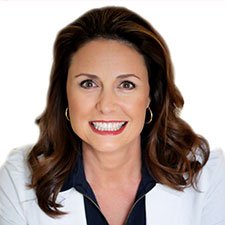
Suzy Cohen, has been a licensed pharmacist for over 30 years and believes the best approach to chronic illness is a combination of natural medicine and conventional. She founded her own dietary supplement company specializing in custom-formulas, some of which have patents. With a special focus on functional medicine, thyroid health and drug nutrient depletion, Suzy is the author of several related books including Thyroid Healthy, Drug Muggers, Diabetes Without Drugs, and a nationally syndicated column.

